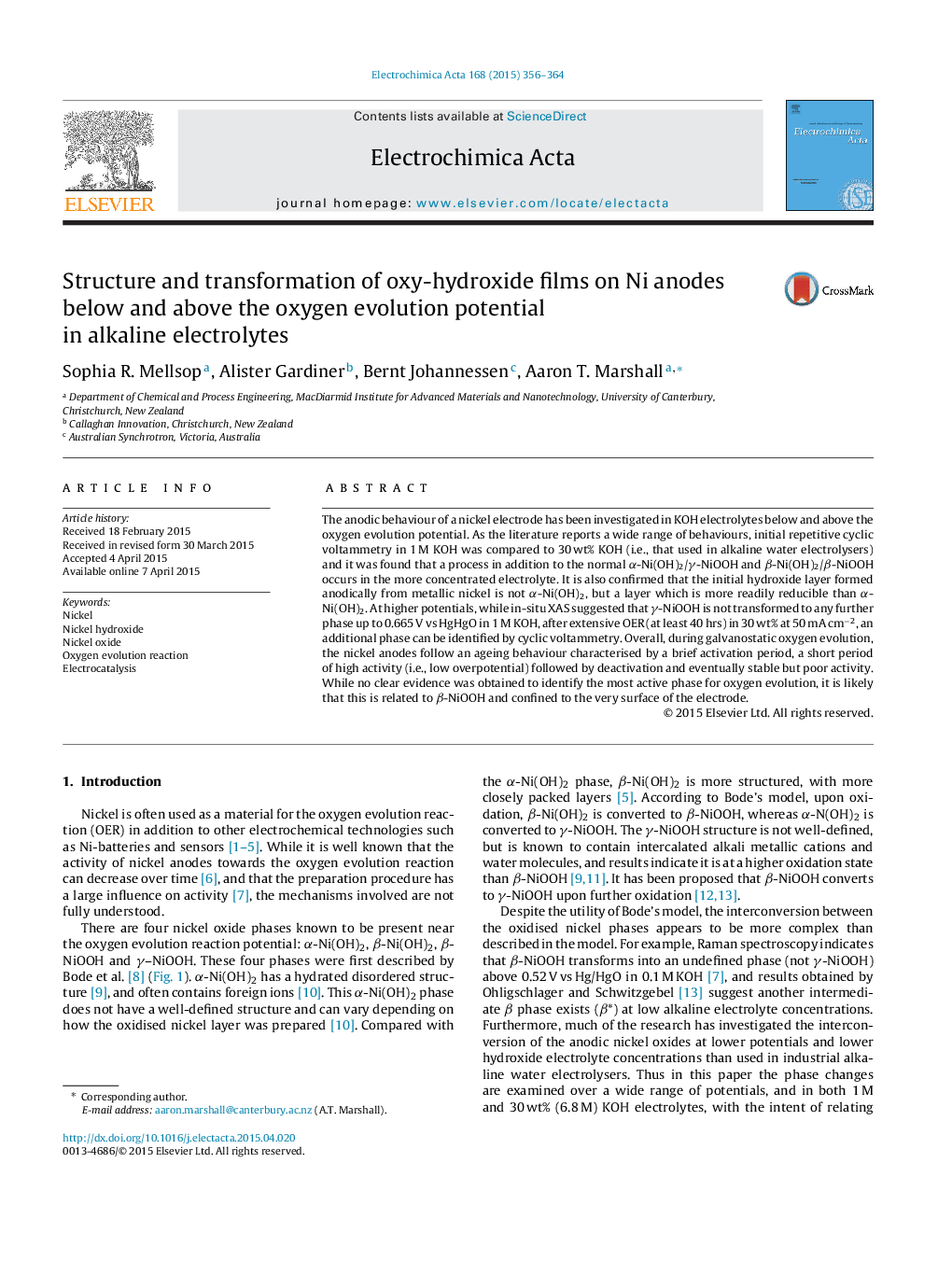| کد مقاله | کد نشریه | سال انتشار | مقاله انگلیسی | نسخه تمام متن |
|---|---|---|---|---|
| 184255 | 459571 | 2015 | 9 صفحه PDF | دانلود رایگان |
The anodic behaviour of a nickel electrode has been investigated in KOH electrolytes below and above the oxygen evolution potential. As the literature reports a wide range of behaviours, initial repetitive cyclic voltammetry in 1 M KOH was compared to 30 wt% KOH (i.e., that used in alkaline water electrolysers) and it was found that a process in addition to the normal α-Ni(OH)2/γ-NiOOH and β-Ni(OH)2/β-NiOOH occurs in the more concentrated electrolyte. It is also confirmed that the initial hydroxide layer formed anodically from metallic nickel is not α-Ni(OH)2, but a layer which is more readily reducible than α-Ni(OH)2. At higher potentials, while in-situ XAS suggested that γ-NiOOH is not transformed to any further phase up to 0.665 V vs HgHgO in 1 M KOH, after extensive OER (at least 40 hrs) in 30 wt% at 50 mA cm−2, an additional phase can be identified by cyclic voltammetry. Overall, during galvanostatic oxygen evolution, the nickel anodes follow an ageing behaviour characterised by a brief activation period, a short period of high activity (i.e., low overpotential) followed by deactivation and eventually stable but poor activity. While no clear evidence was obtained to identify the most active phase for oxygen evolution, it is likely that this is related to β-NiOOH and confined to the very surface of the electrode.
Journal: Electrochimica Acta - Volume 168, 20 June 2015, Pages 356–364
